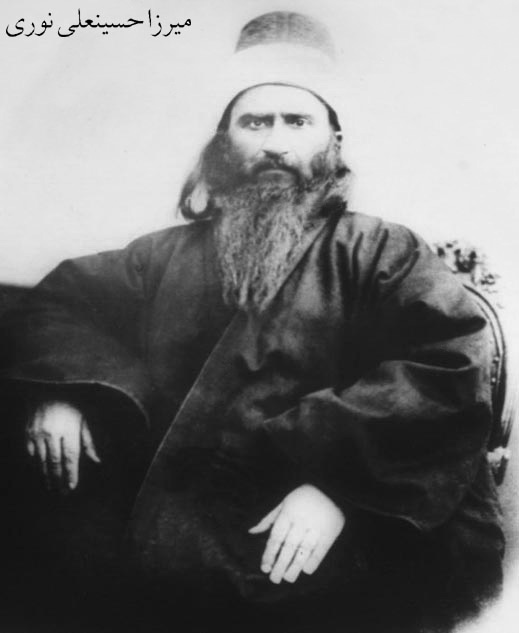|
print
friendly version of lecture notes
|
Origins and leadership
19th cent. Persia (Iran)
founders and first
followers were Muslim:
The Bab ("The Gate")
1819-1850:
-
in 1844 declared himself to be the 12th
Imam of Shiite expectations and proclaimed the coming of a new
message and a new messenger (equivalent of John the Baptist).
-
He and his followers (called "Babis")
were rejected and persecuted as blasphemers by Muslims since Muhammad was
believed to be the last of the messengers to be sent to humanity by
God.
-
The Bab was martyred in 1850 but his
followers continued belief in his teachings about a coming messenger and
they continued to be persecuted, imprisoned and ultimately (in 1863) exiled
from Persia.
Bahaullah ("The Glory of
God") 1817-1892:

Note: Out of a sense of great reverence for
Baha'u'llah, Baha'is generally do not display images him.
-
a follower of The Bab who, in a mystical
encounter with an angelic being (1852), came to recognize himself as the
one prophesied by The Bab.
-
In 1863, during their exodus from
Persia, he declared this to the rest of the Babis. They now became his
followers and known thereafter as Bahais.
-
However, they remained a persecuted
group and Bahaullah was ultimately put under house arrest for the
remainder of his life by the Turkish government in Acre (now in Israel).
Acre is now a site of pilgrimage for Bahais.
Abdul-Baha ("Servant of Baha")
(1844-1921):
-
Bahaullahs son carried on his
fathers work after Bahaullahs death. He did much to spread the
faith worldwide. He traveled to Europe and North America.
-
Although it grew out of Shiite
Islam, it was never accepted by Islam as a legitimate Muslim sect and
neither does it see itself as such (although some Muslims think of it as a
heretical sect of Islam).
-
The Bahai faith became a new, universal
religion now with over 5 million followers in over 200 countries from
all races and nationalities.
Shoghi Effendi (1897-1957):
-
appointed by his grandfather, Abdul
Baha, to be "Guardian of the Faith"
-
restructured the faith into local
organizations with a central world leadership elected from among the
followers rather than led by a single descendent of the founder.
Current organization and leadership:
democratic and hierarchical:
:
formed in 1963, is now the ruling body of the Bahai faith located in
Haifa, Israel. Its nine members are elected every five years by the
various National Spiritual Assemblies from among all the worlds Bahais.

Bahá'í World Centre buildings on Mt. Carmel,
Haifa, Israel
-
National Spiritual Assemblies : the
ruling bodies within each nation having sufficient number (nine?) of Local
Bahai Communities. Delegates elected by each Community gather to elect
members to the NSA from among all Bahais in each nation.
-
Local Bahai Communities : wherever
there are at least nine adult Bahais within a local geographic area, this
smallest unit of organization can be formed. Like a parish of the Catholic
church, Bahais living in a certain area are automatically members of the
Local Bahai Community. Local leadership is by an elected body of nine
members who constitute the "Local Spiritual Assembly".
return to top
|

